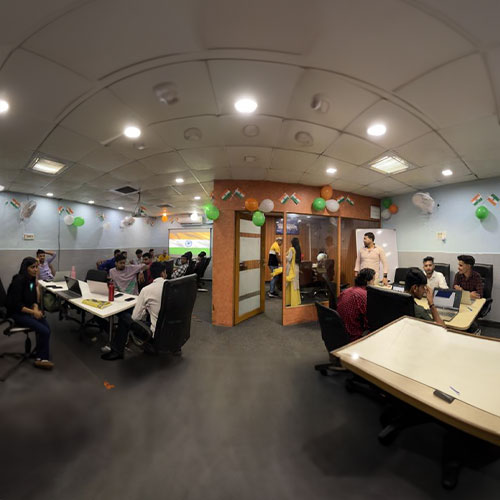What is Python
Why Python Training
Features of Python
- Python is easy to use and learn as compared to other programming languages like JAVA and C++. Anyone can learn python.
- Python is Freely Available. You can download it from python website.
- It is also High Level Languages. Programmers don’t need to remember system architecture.
- Python having portable code for system machine.
- Python is an Interpreted Language like C++ or Java, you need to Compile it and then run it.
- It is an Object Oriented Programming language and having combination of Data and Functions.
- Python is and Extendable Language, you can Extend Other Languages Code in Python.
- It has Large Standard Library; you don’t need to write own code for everything. There are lot of libraries which developer can used in build a programs.
Where Python Programming Used
Automation Testing: Python is used to build automation tools for Analytics, SEO etc. It is most popular scripting to build automation tools.
Django and Flask Developers: Python have two most popular frameworks of Django and Flask. It helps to develop complex and simple website using this Framework. In python you can build Portal and other Social Networking Websites also.
Mobile Testing: Python is used to mobile testing. If you want to work on device testing, then python is a best language for you.
Build Scatter Graph: Python is best programming languages which can plot high level graph which used in data analytics. These Graph Points are depending upon two dimensional values. By using python and R Programming we can plot graph and build high level data.
What is duration of this course?
What is use of Python in AI?
Introduction
- History
- 3.6 Features
- Pros and Cons
- Application
- Install on Window
- Setting up path
- Working with Python
- Basic Syntax
- Variable and Data Types
- Operator
- Comments, Indentation and Statements
- Asserts statements
- Variable Scope
- Identifies
- Strings
- Operators
- Bitwise & Comparison Operators
- Ternary and Decision Making.
Conditional Statements
- If
- If- else
- Nested if-else.
Conditional Statements
- For
- While
- Nested loops
- Switch Case
Control Statements
- Break
- Continue
- Pass
String Manipulation
- Accessing Strings
- Basic Operations
- String slices
- Function and Methods
Lists
- Introduction
- Accessing list
- Operations
- Working with lists
- Function and Methods
Tuple
- Introduction
- Accessing tuples
- Operations
- Working
- Functions and Methods
- Named Tuples
- Counters
Dictionaries
- Introduction
- Accessing values in dictionaries
- Working with dictionaries
- Properties
- Functions
Functions
- Defining a function
- Calling a function
- Types of functions
- Function Arguments
- Anonymous functions
- Global and local variables
- Build in Functions
- Methods vs Functions
- Function Arguments
- Zip Function
- Constructor
- Lambda Expression
- Decorators and Generators
Modules
- Importing module
- Math module
- Random module
- Packages
- Composition
Input-Output
- Printing on screen
- Reading data from keyboard
- Opening and closing file
- Reading and writing files
- Functions
Exception Handling
- Exception
- Exception Handling
- Except clause
- Try ? finally clause
- User Defined Exceptions
Upcoming Batches, Courses Fees & Teacher Profile
Upcoming Batches | Click Here Teacher Profile | Click HereAdvance Python
OOPs concept
- Class and object
- Attributes
- Inheritance
- Overloading
- Overriding
- Data hiding
Regular expressions
- Match function
- Search function
- Matching VS Searching
- Modifiers
- Patterns
CGI
- Introduction
- Architecture
- CGI environment variable
- GET and POST methods
- Cookies
- File upload
Database
- Introduction
- Connections
- Executing queries
- Transactions
- Handling error
Networking
- Socket
- Socket Module
- Methods
- Client and server
- Internet modules
Multithreading
- Thread
- Starting a thread
- Threading module
- Synchronizing threads
- Multithreaded Priority Queue
GUI Programming
- Introduction
- Tkinter programming
- Tkinter widgets
Numpy
- Multidimensional Array
- Type
- Shape
- Size
- Random
- Ones
- Zeros
- Full
- Plus, Minus, Multiply
- Transpose ( T )
- Max(axis = 0)
- Min()
- Sum()
- Sort(array, axis = 1|| None | 0)
- Dtypes [(int || Float)]











